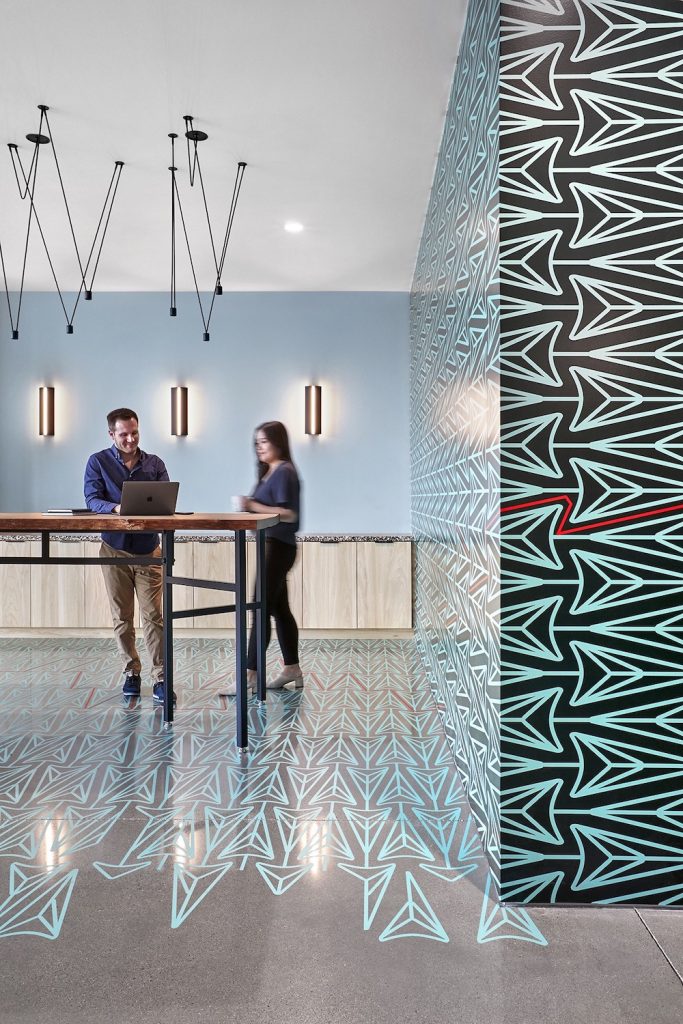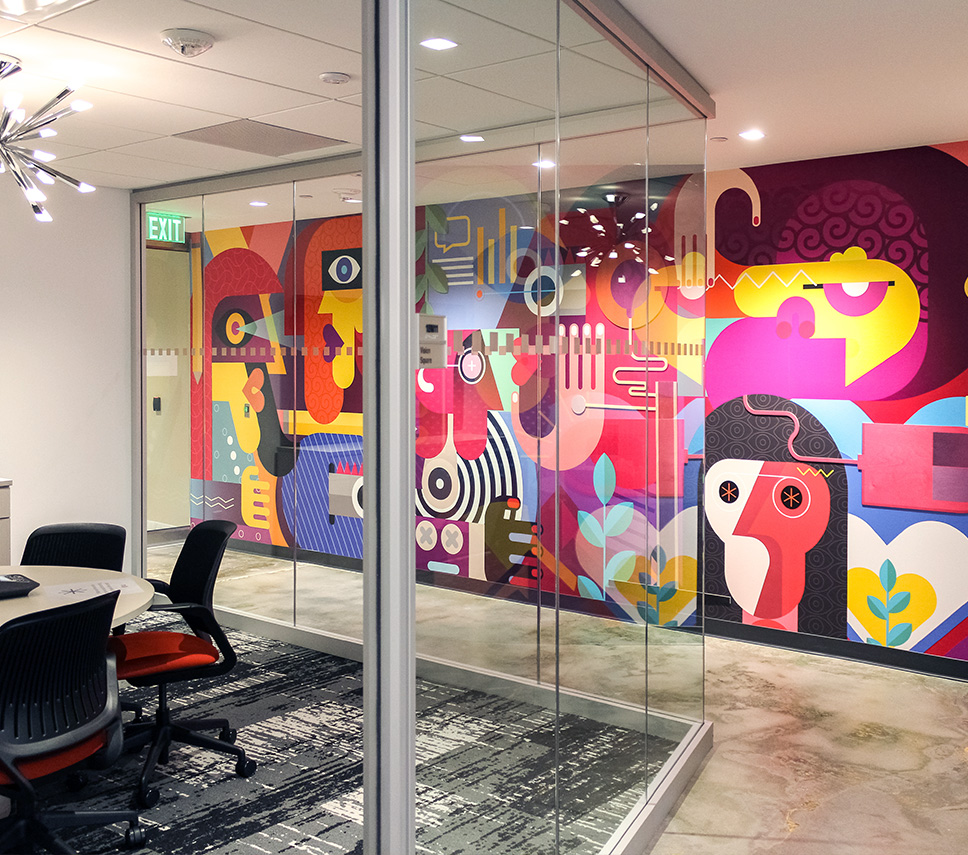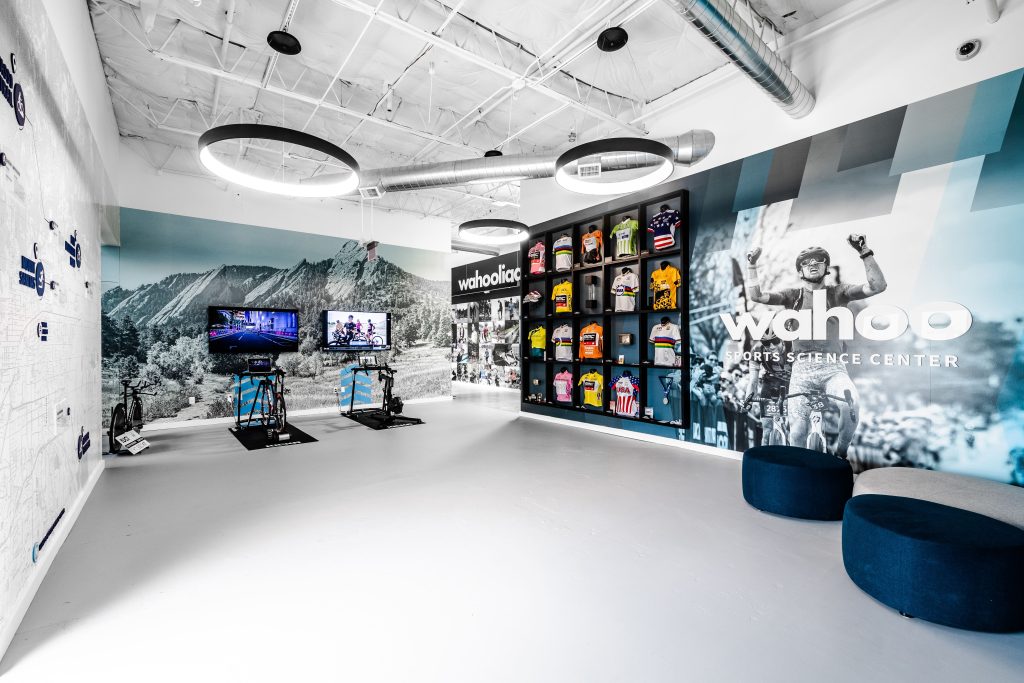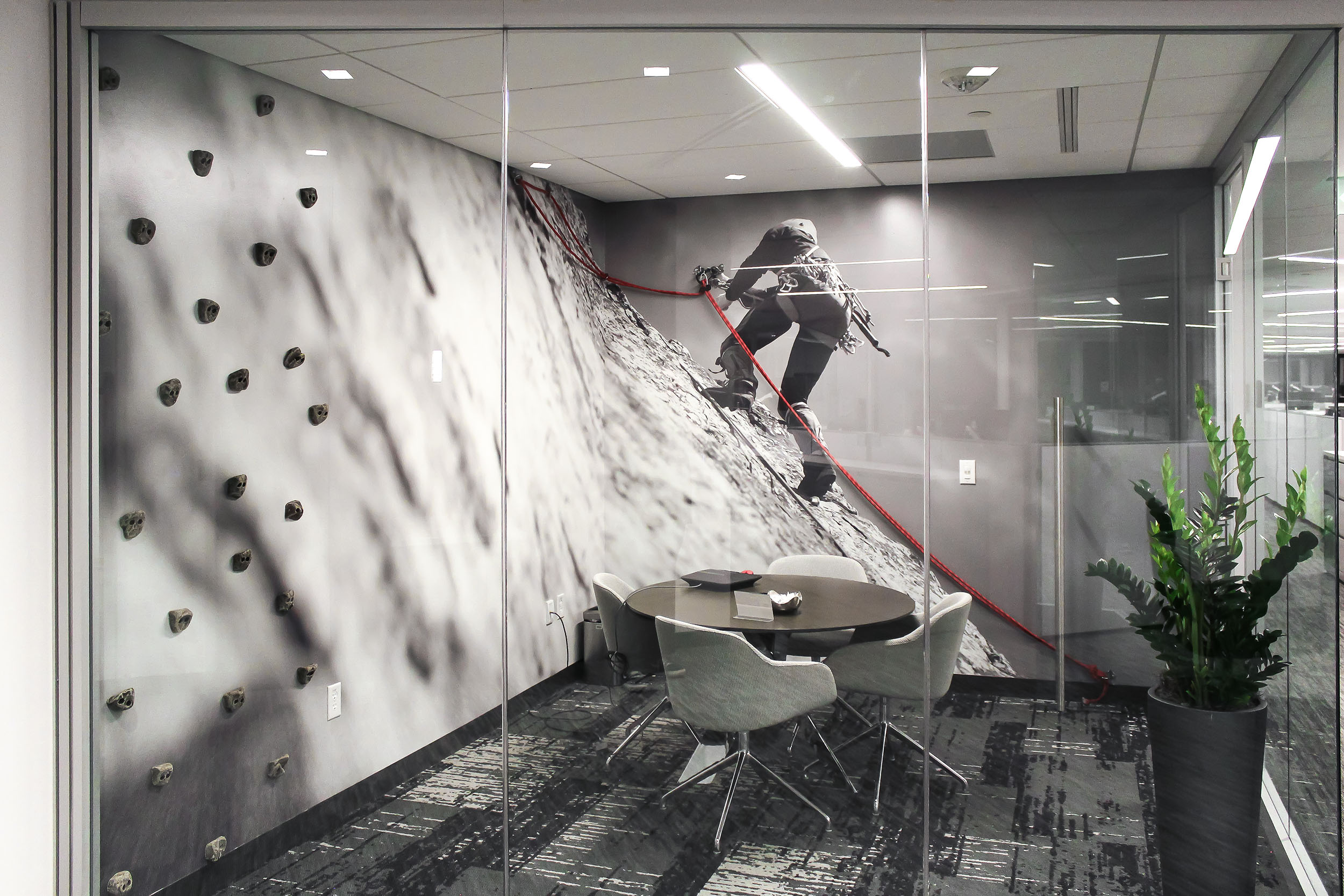The term “Executive Briefing Center,” often abbreviated to EBC, at first sounds like something cold, stuffy, corporate… like something straight out of Mad Men. In fact, Don Draper might be sitting in one right now with a scotch in hand. But none of that is true. In reality, an EBC is an immersive environment to showcase brand, company culture, and/or product for visitors and clients. They’re one of the hottest subjects right now in the world of commercial real estate because of their focus on experience. Until recently, EBC’s were created mainly for clients and visitors. But with post-pandemic wants and needs shifting among the workforce, EBC’s may now offer value to a new demographic. People are experience-driven now more than ever, and much more likely to leave their homes when the promise of something unique and memorable awaits. Additionally, people crave a sense of belonging at their workplace. They want to feel a sense of community and connection to culture. With this emerging pattern of behavior, the potential benefits of an experience center as an alternative to a traditional workplace are pertinent for not just clients, but also employees. They’re literally made to provide an experience and connect visitors to company mission and brand values. Because of this new value proposition, perhaps the 2023 take on an “Executive Briefing Center” is about turning the workplace into an “Experience Center” (EC) that becomes inclusive of visitors, clients, and employees. So, what does the shift towards experience look like? How might one re-evaluate the function and purpose of the workplace to be more like an experience center? It starts with research.

If there’s one thing to know about designing an experience center, it’s that there’s no one right way to do an experience center. There’s no template, because each client has a unique purpose, vision, or product that needs to be communicated, and therefore a unique case-based solution is required. In order to do that effectively, research becomes crucial. It’s important to understand the client on such a granular level that the desired message can be translated into a visual, and that’s not easy to do without understanding or believing in the key messages. Good research is the catalyst to intentional, goal-driven designs. This research phase might look different for each client, but ideally involves some form of hands-on workshop to ask questions and uncover a deeper “why.” In some ways, it’s a bit like holding a mirror up to the customer. These workshops can actually help them better recognize and understand their culture as a result. Those special stories that come out of deeper research and discussion are what become a fun discoverable moment or hidden message in the resulting designs.
Because Experience Centers are meant to aid in creating a sense of alignment at the workplace, it’s important to define the end goals of the space and then work backwards from there. What should the space do? How should people feel? Essentially, what is the intention of the EC? Defining the intention can help when it comes to identifying what stories need to be told. For example, is brand or culture more important? And what are the main ideas to capture? If a company story isn’t contributing to the goal of the space, perhaps it doesn’t need to be told with experiential design. Well done experience centers are highly curated, and the details really matter.
Oftentimes a successful experience center is not the result of a single mural or graphic, but a culmination of small details working together to evoke a cohesive design or the “right” feeling. Perhaps it’s a reception desk that takes inspiration from a client’s product. Or a light fixture that is inspired by local streetlamps. It’s important to not just hit users over the head with brand messaging, but rather tell the authentic company story through bespoke details. Working backwards from the goals of the space is a crucial step in order to create something authentic to the client, and avoid cookie-cutter solutions.

JLL Headquarters
When telling a story within a space, it’s important to consider not just the story, but also the physical environment that is your canvas. Effective experience centers build up a story using the space; they have a cadence that works with the flow of the environment to guide users through the various aspects of the brand, company, or product. Every client’s EC space is unique. Some are an immersive room, others journey throughout the entire building. Consider how the visual stories unfold based on the journey path of the user, and how the space will ultimately be used. There might be touch points throughout the building that help craft a holistic story, and each touchpoint may have a different function. A breakroom, for example, might be a great place to put an interactive piece, but a conference room not so much. Both are valuable touch points for storytelling, but have different advantages.

Wahoo sports science
Making a destination-worthy workplace doesn’t happen overnight, which means designs need to be future-proofed to an extent. Leveraging technology can be a great way to create flexible, dynamic content. Instead of creating something physical that can’t be changed over time, certain technologies make it easy to go back in and update content, or even create new experiences using the same tools. Programmable lighting is a great example of this. That being said, creating future-forward experience centers doesn’t always have to mean leveraging the latest technologies. Sometimes a simple takeaway can be a great addition to a space that gets users wanting to come back. Consider how the story might bring welcome users into the space, navigate them through it, and leave them wanting more? As the purpose and function of the workplace continues to change in 2023 and beyond, Experience Centers as alternative workplaces have a lot of potential. With an experience-forward approach, a lobby, a break room, or even a hallway becomes an opportunity to build relationships through experiences, which in turn build business and connection to an organization. The well-known quote from Maya Angelou states; “People will forget what you said. People will forget what you did. But people will never forget how you made them feel.” And that really sums up the whole point of an experience center; It’s a way to instill a feeling and create a lasting experience that customers will remember, and employees will want to return to. And when you’re able to make someone feel something, that’s worth quite a lot.

Julia Thummel
Senior Designer, 3d-identity
Originally published in Work Design Magazine May 2023.

 Instagram
Instagram